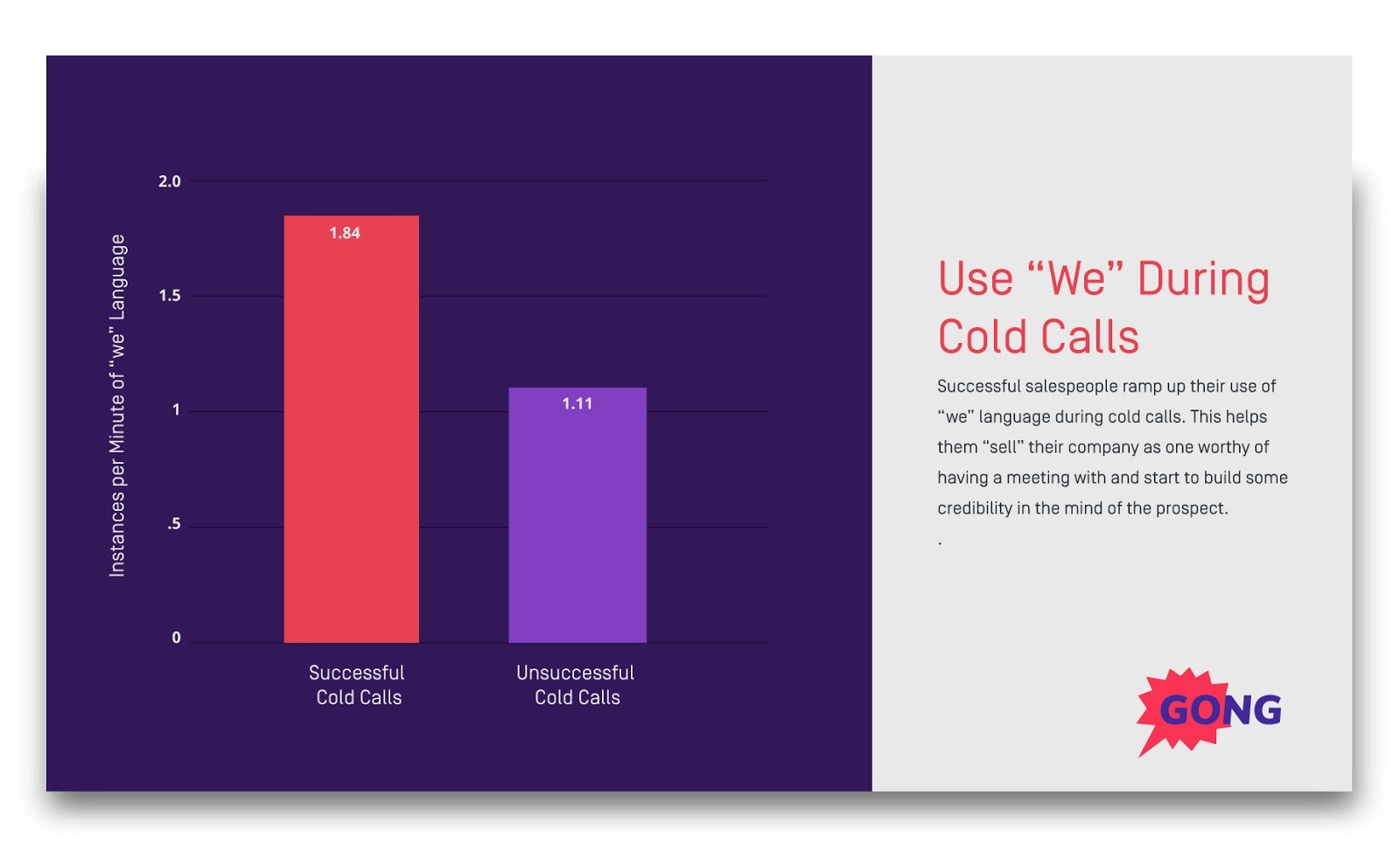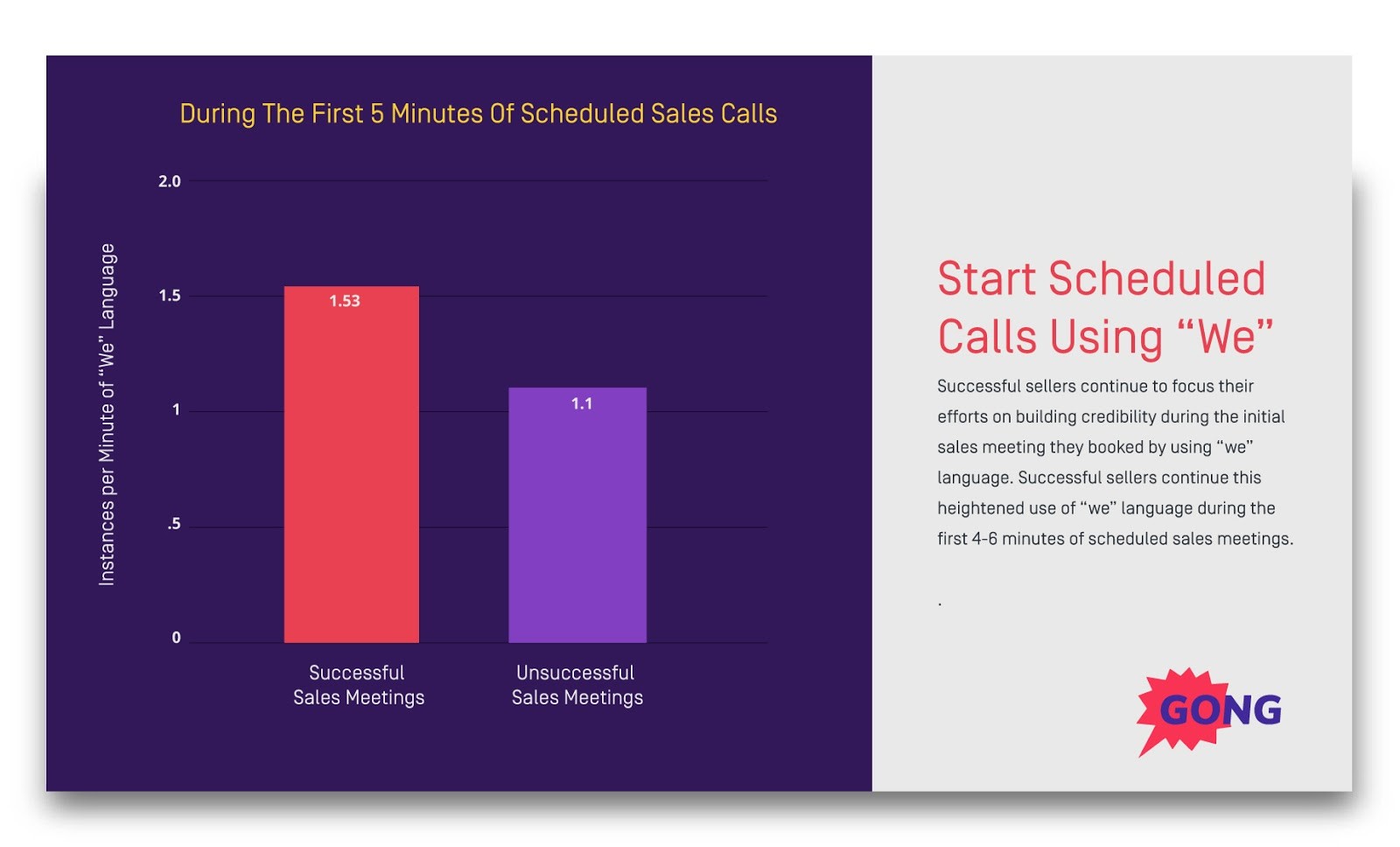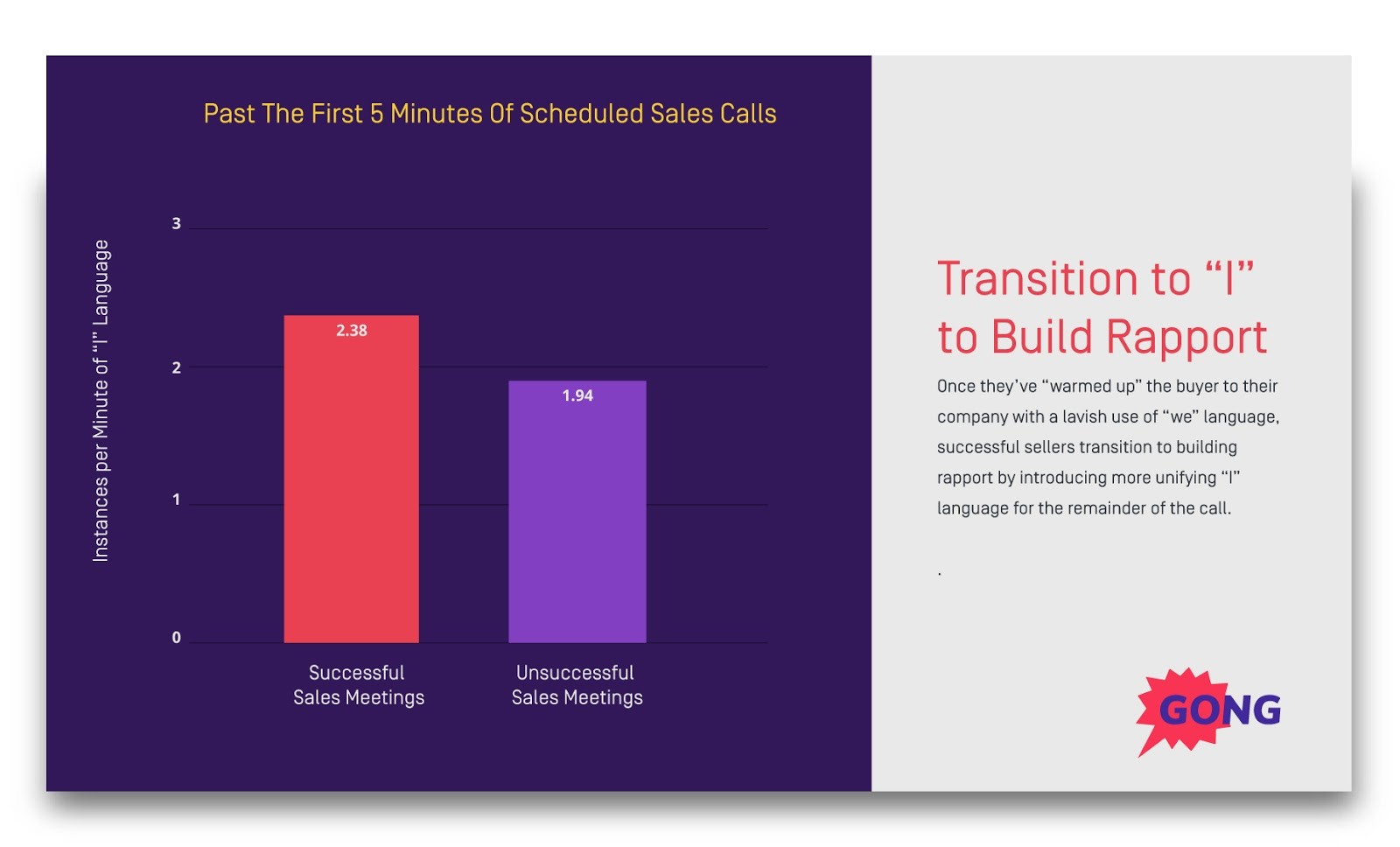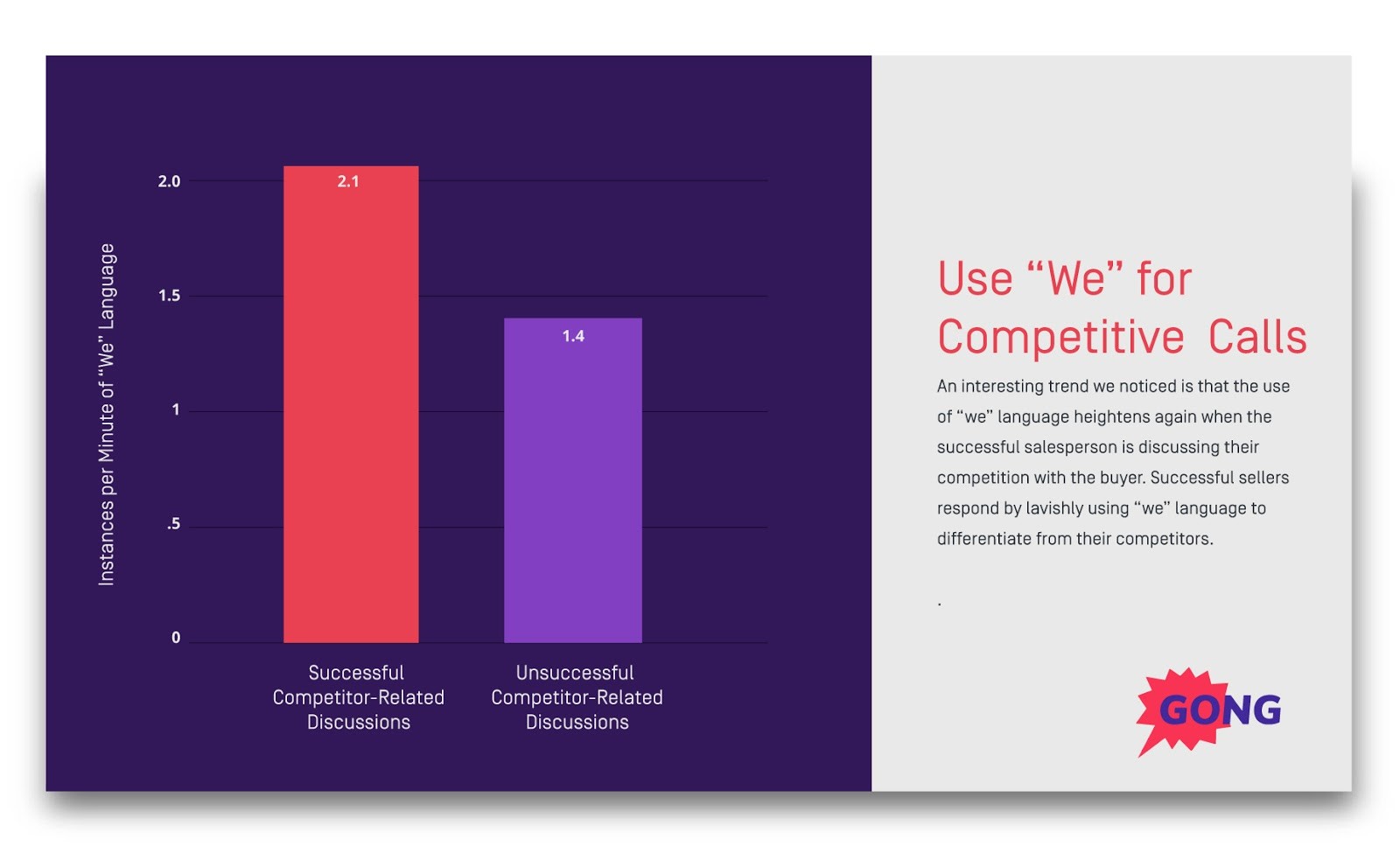Persuasive language techniques for sales success
Highly successful salespeople deploy tiny persuasive language techniques to sell more.
Some of these techniques are so subtle, they’re barely perceptible:
Like using “I” or “we” language at the right time.
It’s a small switch, but these two first-person language types create completely different dynamics in your sales conversation.
When you predominantly use “we” language (referring to your company rather than yourself), the tone of the conversation seems formal:
“ We’ve raised $26M from top investors…”
“ We’re based in San Francisco…”
“ Our customers rave about us…”
By contrast, when you emphasize “I” language, the tone feels personal — like two new friends getting to know each other over lunch:
“I just got back from New York…”
“ I’ve been working here for 18 months…”
“My son just started preschool…”
“I” language creates a more human vibe than “we” language.
But therein lies the trap.
Don’t be led astray, assuming “I” language is always better.
Sure, it seems like a useful, rapport-building tool.
But using it at certain points during your sales call is a big mistake, according to new data I’m about to share.
The data science team here at Gong.io analyzed language patterns used in sales calls from 23,363 B2B deals.
Every sales call was transcribed and analyzed with AI to isolate the key language patterns used in successful interactions.
According to our research, the most persuasive salespeople in the world tailor their use of “we” and “I” language in specific situations.
Let’s take a closer look at when they use each language type.
Use “We” Language to Build Credibility
Selling your company is just as important as selling yourself at certain points in the sales process.
Cold calling is one of them.
Your buyer doesn’t know your company from Adam.
To combat this lack of credibility, successful salespeople use “we” language more frequently during cold calls:
This keeps the focus on building enough company-level credibility to book a first meeting.
Keep in mind, they don’t use “we” language instead of “I” language.
They simply increase their use of “we” language while still using “I” language.
(Important Note: “I” language is a much more common type of language than “we” language is. That’s why comparing their overall numbers “against” each other is like comparing apples to oranges. They are not mutually exclusive).
Use “I” Language to Humanize Yourself
Successful sellers don’t decrease their use of “we” language after a successful cold call.
In fact, they keep the focus on building credibility by using “we” language more often in the first 4-6 minutes of their first scheduled sales meeting:
But things soon take an interesting turn.
These super-persuasive sellers slowly transition to using more “I” language” and less “we” language as the sales meeting progresses, particularly after the 5-minute mark:
Once they’ve warmed up the buyer to their company with a lavish use of “we” language, they transition to building rapport by laying it on thick with more “I” language.
This research suggests that for personal rapport-building to have a positive effect on the sale, you need to use credibility building “we” language first.
Tailor Your Language For These Situations
Timing isn’t the only factor that determines when to use “we” and “I” language.
There are other situations throughout the sales process that call for one or the other.
Differentiating yourself from the competition is a good example.
Successful salespeople heighten their use of “we” language when they discuss their competition with a buyer:
When a buyer compares competitors, they are, to some degree comparing their credibility.
So just like they did at the beginning of the call, successful sellers respond by lavishly using “we” language.
“ We’re the highest-rated app by end users…”
“ Our engineering team is top notch…”
“We have a track record of success with customers like you…”
As the saying goes, differentiate your company before you differentiate your product.
At the other end of the spectrum, a successful seller’s use of “I” language heightens during pricing negotiations:
If you don’t humanize yourself during a negotiation, you risk the buyer treating you ruthlessly.
They’ll feel like they’re negotiating with a company rather than a person, and will therefore “grind you down on price” or “put you through the ringer.”
When you humanize yourself, you can nip this behavior in the bud.
You invite your buyer’s emotions to play a bigger role in their negotiating behaviors.
When you saturate your pricing discussions with “I” language, your buyer is negotiating with you (a good thing) rather than your company (a bad thing).
Want to up your negotiation skills? Learn these 11 proven negotiation techniques to add some serious horsepower to your next closing call.
Master Persuasive Language in Two Steps
We only covered one type of language in this article: first-person language.
We still have ground to cover in helping you use other types of language, such as second-person — or “you” — language, which is likely far more important.
So, here’s what to do next:
STEP 1: Download Our Free, Printable Cheat Sheet
We’ve summarized the insights in this article so you can easily share them with your team.
Download the cheat sheet and make your lessons learned stick:
Once you download it, we’ll add your email to our newsletter and you’ll get fresh insights sent right to your inbox every few weeks.
“You-language” tips coming up.





